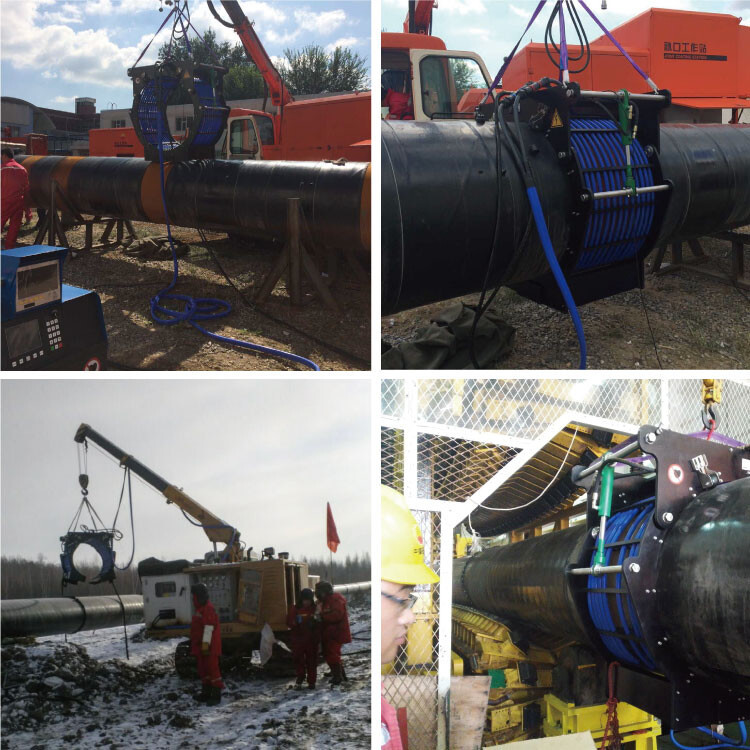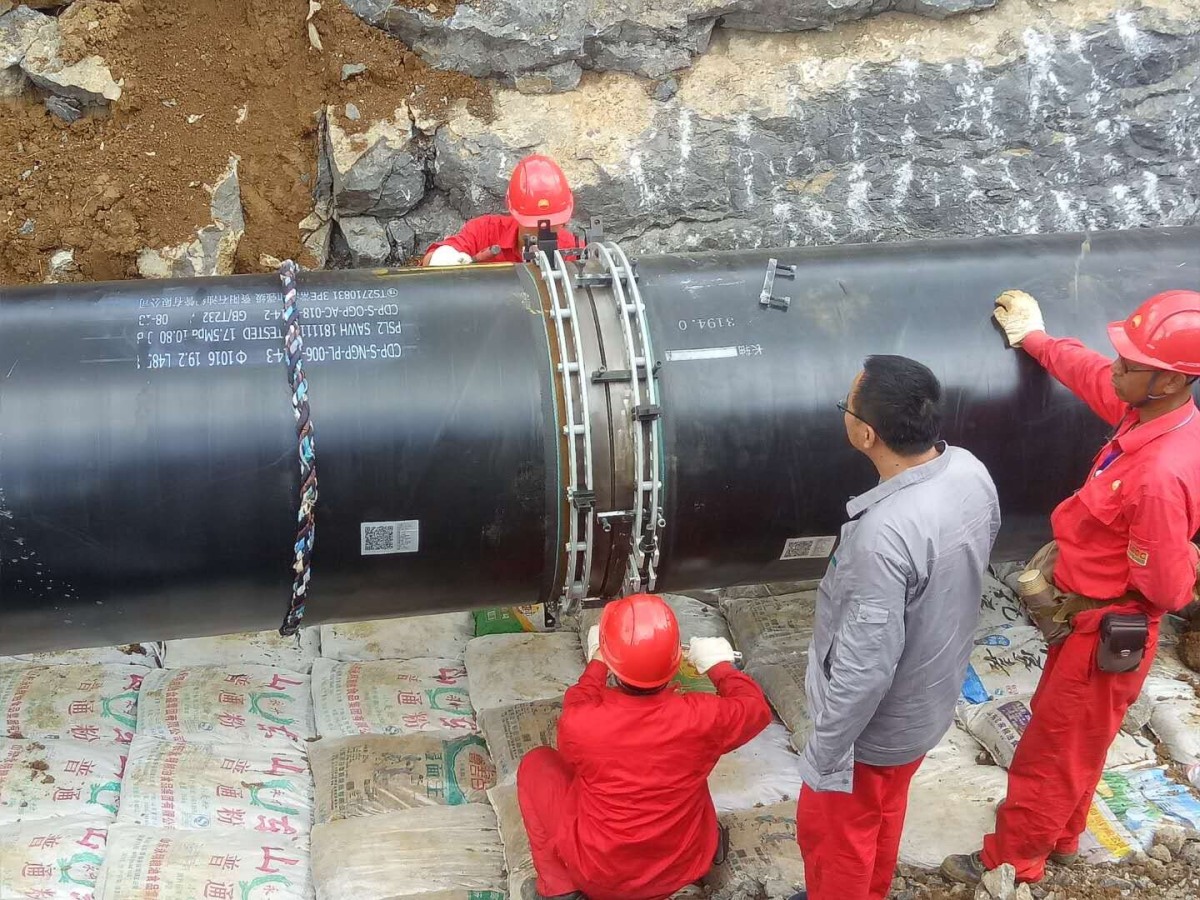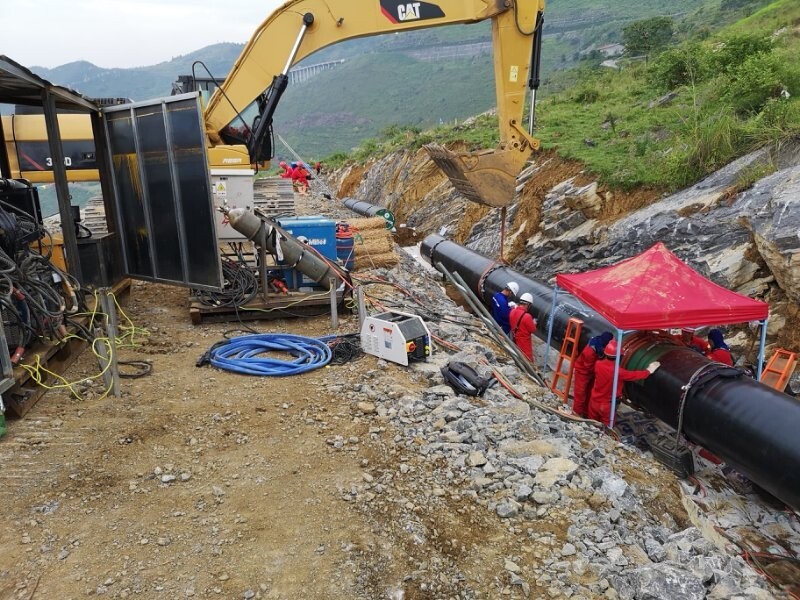
News
Induction heating plays a pivotal role in pipeline corrosion prevention and coating. This technology offers a precise and efficient method for heating, which is crucial for ensuring the durability and effectiveness of protective coatings. By generating heat directly within the pipeline material, induction heating facilitates the application and curing of coatings, enhancing their adhesion and longevity. The use of an induction heater for corrosion coating ensures that the process remains consistent and repeatable, leading to increased production rates and energy savings. In pipeline construction, induction heating proves invaluable, especially when used with a pipeline joints coating machine, providing localized and controlled heating for optimal protection.

Key Takeaways
Induction heating enhances the adhesion and durability of protective coatings on pipelines, ensuring long-lasting corrosion protection.
The technology allows for precise and uniform heating, which is crucial for effective coating application and curing.
Using induction heating significantly speeds up production cycles, leading to increased efficiency and reduced costs in pipeline construction.
Induction heating systems provide energy savings by minimizing energy loss and maximizing heat transfer, making them environmentally friendly.
The method ensures safety during the coating process by reducing the risk of accidents associated with open flames or hot surfaces.
Induction heating is versatile and effective in harsh environments, maintaining pipeline integrity and enhancing coating performance.
Industries such as automotive, aerospace, and defense benefit from induction heating's efficiency and precision in various applications.
Understanding Induction Heating Technology
Basics of Induction Heating
Induction heating stands as a cornerstone in modern industrial applications. This technology operates by passing an alternating current through a copper coil, which generates a rapidly alternating magnetic field. This field induces eddy currents within conductive materials, producing heat directly in the material itself. The process is highly efficient, as it minimizes energy loss and maximizes heat transfer to the target object. Industries such as defense, aerospace, and automotive have embraced induction heating for its ability to enhance product quality and productivity. Its precision and control make it ideal for applications requiring specific thermal profiles.
Relevance to Pipeline Corrosion Prevention and Coating
In the realm of pipeline corrosion prevention and coating, induction heating proves indispensable. The technology facilitates the application of protective coatings by ensuring uniform heat distribution across the pipeline surface. This uniformity is crucial for achieving optimal adhesion and durability of the coatings. Induction heating systems can pre-heat pipelines to the necessary temperatures, enhancing the effectiveness of fusion-bonded epoxy coatings. By doing so, they provide robust protection against corrosion, extending the lifespan of pipelines. The induction process also allows for efficient curing of coatings, ensuring they adhere properly and offer long-lasting protection. This method not only improves the quality of the coating but also accelerates the production process, making it a preferred choice in pipeline construction and maintenance.
The Process of Applying Induction Heating

Preparation and Coating Application
The preparation phase is crucial in ensuring the success of the coating application on pipelines. Technicians begin by thoroughly cleaning the pipeline surface to remove any contaminants that might hinder the adhesion of the coatings. This step ensures that the internal pipeline coating adheres properly, providing a robust barrier against corrosion. Once the surface is clean, they apply a primer layer, which acts as a bonding agent between the pipeline and the final coating. This primer enhances the effectiveness of the subsequent layers, ensuring long-lasting protection.
Induction Coil Setup and Heating
Setting up the induction coil is a critical step in the process. Technicians position the coil around the pipeline, ensuring it covers the area designated for coating. The induction heating system then generates a magnetic field, which induces eddy currents within the pipeline material. This process heats the pipeline uniformly and rapidly, preparing it for the application of the internal pipeline coating. The precision of induction heating allows for controlled temperature settings, ensuring that the pipeline reaches the optimal temperature for coating adhesion. This method not only speeds up the heating process but also ensures energy efficiency and safety.
Curing, Monitoring, and Inspection
After applying the coatings, the curing coating of pipeline begins. Induction heating for curing coatings offers precise temperature control, ensuring that the coatings cure evenly and adhere properly. This step is vital in preventing corrosion and extending the lifespan of the pipeline. Throughout the curing process, technicians monitor the temperature and other parameters remotely, ensuring consistency and quality. Once the curing is complete, they conduct a thorough inspection to verify the integrity of the coatings. This inspection ensures that the coatings provide the necessary protection against environmental factors and mechanical stress.
Advantages of Using Induction Heating
Speed and Efficiency
Induction heating offers unparalleled speed and efficiency in the application of protective coatings. This method heats materials directly and rapidly, significantly reducing processing times compared to traditional methods. The induction heating system can quickly heat long sections of pipelines, saving both time and money on construction projects. By eliminating the need for preheating, induction heating streamlines the coating process, ensuring that the protective layer adheres effectively and provides robust corrosion protection. This efficiency not only accelerates production but also enhances the overall quality of the coatings applied.
Control and Precision
The precision of induction heating stands out as a key advantage. This technology allows for accurate and varied heating, enabling precise adjustment of heating position and material dimensions. Such control ensures that the protective layer is applied uniformly, which is crucial for effective corrosion prevention. The induction heating system provides consistent temperature control, which is essential for achieving optimal adhesion of coatings. This precision minimizes the risk of defects and ensures that the coatings offer long-term protection against environmental factors and mechanical stress.
Energy Efficiency and Safety
Induction heating is renowned for its energy efficiency and inherent safety advantages. By generating heat directly within the material, this method minimizes energy loss and maximizes heat transfer. This efficiency translates into significant energy savings, making induction heating an environmentally friendly choice for pipeline coating applications. Additionally, the safety features of induction heating systems reduce the risk of accidents during the coating process. The clean and controlled nature of induction heating ensures that the anti-corrosion system operates safely, protecting both workers and the environment. This method not only enhances pipeline safety but also supports the implementation of advanced coating solutions for active corrosion protection.
Practical Applications and Case Studies
Industry Examples
Induction heating technology has revolutionized various industries with its versatility and efficiency. In the realm of pipeline corrosion prevention and coating, this technology stands out for its ability to deliver precise and controlled heating. Industries such as automotive, aerospace, and defense have long relied on induction heating for tasks like heat treating, brazing, and soldering. These applications demonstrate the technology's adaptability and effectiveness in enhancing product quality and performance.
In the pipeline industry, induction heating plays a crucial role in field joint coating applications. By providing uniform heat distribution, it ensures that coatings adhere properly, offering robust protection against corrosion. This method not only accelerates the coating process but also enhances the durability of the protective layers applied to pipelines. The ability to pre-heat pipelines to optimal temperatures before applying high-performance anti-corrosion coatings further underscores the importance of induction heating in this sector.
Canroon's Induction Heating is applied in pipeline corrosion prevention and coating Success Stories and Outcomes
Canroon has successfully implemented induction heating technology in pipeline corrosion prevention and coating projects. Their innovative approach has led to significant improvements in both efficiency and effectiveness. By utilizing induction heating, Canroon has achieved remarkable results in ensuring the longevity and integrity of pipeline coatings. Their systems provide precise temperature control, which is essential for achieving optimal adhesion and curing of coatings.
One notable success story involves a major pipeline project where Canroon's induction heating technology was employed to enhance the corrosion protection solutions. The project required the application of high-performance anti-corrosion coatings to withstand harsh environmental conditions. Canroon's induction heating systems ensured that the coatings cured evenly and adhered properly, resulting in a durable and reliable protective layer. This outcome not only extended the lifespan of the pipeline but also demonstrated the value of induction heating in achieving superior corrosion protection.
Through these industry examples and success stories, it becomes evident that induction heating is an indispensable tool in pipeline corrosion prevention and coating. Its ability to deliver consistent and efficient heating makes it a preferred choice for industries seeking reliable and high-quality corrosion protection solutions.

Induction heating emerges as a transformative solution in pipeline corrosion prevention and coating applications. This technology ensures uniform heating along the pipeline, enhancing the adhesion and durability of coatings. The efficiency of induction heating translates into faster production cycles and significant energy savings. By providing quick curing of coatings, it maintains pipeline integrity, especially in field joint applications. The ability to operate effectively with practical pipe sizes and insulation thickness further underscores its versatility. Induction heating stands as a reliable and efficient method for ensuring long-lasting protection against corrosion.
FAQ
What are the advantages of using induction heating in pipeline construction?
Induction heating offers several benefits in pipeline construction:
Localized Heating: It targets only the areas that need treatment, ensuring precision.
Faster Heating Cycles: The process speeds up production, allowing for increased daily output.
Consistency and Repeatability: Induction heating delivers consistent results, enhancing reliability.
Efficiency and Safety: The method is extremely efficient and safe for operators.
Reduced Personnel: Fewer workers are needed on-site, minimizing labor costs.
Energy Savings: The process consumes less energy, contributing to cost-effectiveness.
How does induction heating contribute to corrosion prevention?
Induction heating plays a crucial role in corrosion prevention by ensuring that protective coatings adhere properly to the pipeline surface. The technology provides uniform heat distribution, which is essential for the effective curing of coatings. This uniformity enhances the durability and longevity of the coatings, offering robust protection against corrosion.
Why is induction heating preferred over traditional heating methods?
Induction heating is preferred due to its speed, precision, and energy efficiency. Unlike traditional methods, it generates heat directly within the material, reducing energy loss and ensuring rapid heating. This precision allows for controlled temperature settings, which are vital for achieving optimal coating adhesion and preventing corrosion.
Can induction heating be used in harsh environments?
Yes, induction heating is highly effective in harsh environments. Its ability to provide controlled and efficient heating makes it ideal for pipeline applications where environmental conditions can be challenging. The technology ensures that coatings cure properly, maintaining pipeline integrity and offering long-lasting protection against corrosion.
What industries benefit from induction heating technology?
Induction heating technology benefits various industries, including automotive, aerospace, defense, and pipeline construction. In these sectors, it is used for tasks such as heat treating, brazing, soldering, and coating applications. The technology's versatility and efficiency make it a valuable tool for enhancing product quality and performance.
How does induction heating ensure safety during the coating process?
Induction heating ensures safety by generating heat directly within the material, minimizing the risk of accidents. The clean and controlled nature of the process protects workers and the environment. Additionally, the technology reduces the need for open flames or hot surfaces, further enhancing safety during the coating process.
Is induction heating environmentally friendly?
Yes, induction heating is environmentally friendly. Its energy-efficient process minimizes energy consumption, reducing the carbon footprint. By providing precise and localized heating, it also reduces waste and enhances the sustainability of pipeline coating applications.
Previous:
Next:
Please give us a message